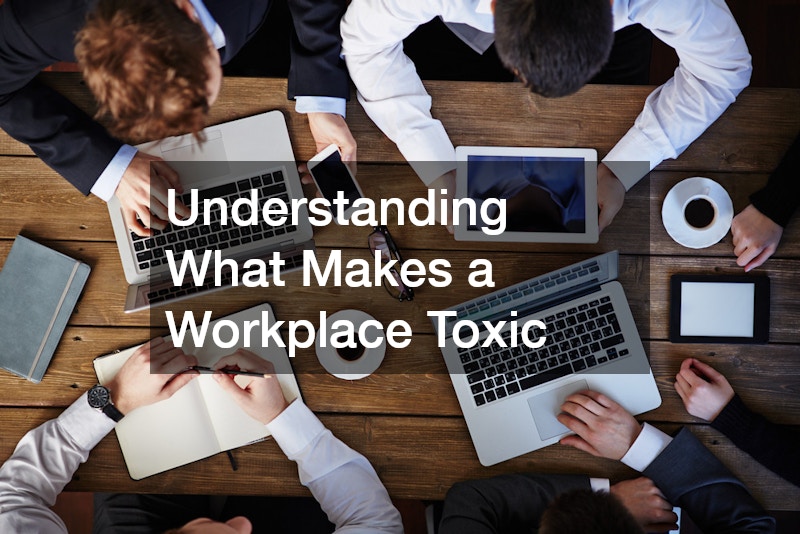A toxic work environment can drain your energy, harm your mental health, and even put your career at risk. It’s more than just having a bad day at work—constant negativity, bullying, discrimination, or unethical practices can take a serious toll.
For employees, especially those in stressful or competitive industries, knowing how to protect yourself isn’t just a matter of comfort—it’s about safeguarding your rights, health, and future job prospects. This guide breaks down how to recognize a toxic workplace, steps you can take to protect yourself, and when to seek legal help.
Understanding What Makes a Workplace Toxic

A toxic work environment is one where the atmosphere is consistently hostile, unprofessional, or unhealthy. This can be caused by poor leadership, unclear policies, or employees who are allowed to behave badly without consequences.
Common characteristics include:
- Harassment or bullying – This can be verbal abuse, offensive jokes, or intimidation.
- Discrimination – Unfair treatment based on race, gender, age, disability, religion, or sexual orientation.
- Poor communication – Lack of clear expectations, feedback, or respect.
- High turnover – A constant cycle of employees quitting.
- Unrealistic workloads – Long hours with no support or recognition.
If you’ve noticed several of these issues, you may already be seeing the signs of a toxic workplace. Recognizing these early is the first step toward protecting yourself.
The Impact of a Toxic Workplace on Your Career and Health
A toxic environment doesn’t just make you dread Mondays—it can seriously affect your mental, emotional, and physical health. Some of the most common effects include:
- Stress and anxiety – Constant tension can lead to burnout and mental exhaustion.
- Low self-esteem – Repeated criticism or exclusion can make you doubt your abilities.
- Physical symptoms – Headaches, sleep problems, or high blood pressure.
- Career setbacks – Toxic workplaces can stall your professional growth or push you out of a job.
Ignoring these effects can make the situation worse. The longer you stay without addressing the problem, the harder it becomes to recover professionally and personally.
Steps to Take if You’re in a Toxic Workplace
Knowing what to do is key to protecting yourself. Here are practical steps you can take:
1. Address the Issue Internally
If you feel safe doing so, try to resolve the issue within your workplace first.
- Speak to your manager or HR department about your concerns.
- Use official complaint channels outlined in your employee handbook.
- Document your conversations in case you need proof later.
Sometimes management may not be aware of the problem until it’s formally raised.
2. Seek External Advice
If internal action doesn’t work—or if you’re not comfortable reporting the issue internally—reach out for outside help.
- Consult with an employment lawyer to understand your rights and legal options.
- Contact your state’s labor board or workplace regulators if laws may be violated.
Getting legal guidance early can help you avoid mistakes that could hurt your case later.
3. Protect Your Mental Health
You can’t control everything in a toxic workplace, but you can take steps to protect your well-being.
- Set boundaries around work hours to avoid burnout.
- Practice stress-management techniques like deep breathing or exercise.
- Seek therapy or counseling to process what you’re experiencing.
Your mental health is just as important as your career.
Document Everything
If you ever need to take legal action, documentation will be your best defense. Keep detailed records of:
- Emails, text messages, or memos that show harassment or discrimination.
- Notes of conversations with coworkers or supervisors.
- Dates, times, and descriptions of incidents.
Having a clear record makes it harder for the other party to deny what happened and strengthens your credibility.
Know Your Legal Rights
Employees in the U.S. have certain protections under federal and state law. Depending on your situation, you may be protected by:
- Title VII of the Civil Rights Act – Protects against discrimination based on race, color, religion, sex, and national origin.
- Americans with Disabilities Act (ADA) – Prohibits discrimination against individuals with disabilities.
- Fair Labor Standards Act (FLSA) – Covers wage and overtime rules.
- Occupational Safety and Health Act (OSHA) – Requires safe working conditions.
Understanding these laws—and your rights under them—can help you decide your next steps.
When to Seek Legal Help

There are times when workplace problems go beyond HR and require legal intervention. Consider consulting an employment attorney if:
- Harassment or discrimination occurs based on a protected characteristic.
- You face retaliation after reporting misconduct.
- Wage and hour violations occur, such as unpaid overtime or being forced to work off the clock.
- Safety hazards are reported but ignored.
An experienced employment attorney can review your case, guide you through filing a claim, and represent you in negotiations or court if necessary. Acting sooner rather than later helps preserve evidence and strengthens your case.
Preventing a Toxic Workplace (For Employers)
While employees need to protect themselves, employers play a major role in preventing toxic environments. Businesses can:
- Implement strong anti-harassment and anti-discrimination policies.
- Provide leadership training for managers.
- Encourage open communication channels between staff and management.
- Recognize and reward positive contributions.
Healthy workplaces benefit everyone—morale improves, turnover decreases, and productivity rises.
Protecting Yourself While You Look for Other Opportunities
Sometimes the healthiest choice is to leave a toxic environment. If you decide to move on:
- Continue documenting incidents until your last day.
- Avoid burning bridges—maintain professionalism during your notice period.
- Update your resume and LinkedIn profile.
- Network discreetly to find your next role.
Leaving can feel like a loss, but it’s often the first step toward a healthier career path.
Managing Workplace Relationships in a Toxic Setting
If you can’t leave immediately, managing your interactions with difficult coworkers or supervisors is key:
- Limit unnecessary conversations with those who cause stress.
- Focus on completing your tasks rather than engaging in office drama.
- Build alliances with supportive colleagues.
Keeping relationships professional and avoiding gossip can reduce your exposure to negativity.
Self-Care Strategies Outside of Work
What happens at work can follow you home, so taking care of yourself outside the office is crucial:
- Spend time with friends and family who uplift you.
- Engage in hobbies that relax and recharge you.
- Exercise regularly to reduce stress and improve mood.
- Get enough sleep to stay mentally sharp.
Balancing work and life helps you stay resilient, even in challenging conditions.
Conclusion
Protecting yourself in a toxic work environment requires a mix of practical actions, self-care, and legal awareness. Start by identifying the problem, documenting everything, and using internal processes when possible. If the issue continues or your rights are violated, consult an employment attorney to explore your legal options.
Your career and health are worth protecting—don’t let a toxic environment dictate your future. Whether you choose to resolve the situation internally, take legal action, or move on to a healthier workplace, acting with a clear plan ensures you stay in control.
